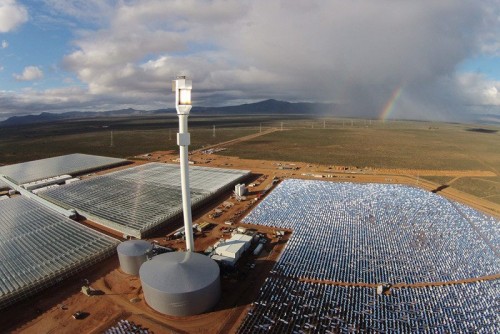RECOMMENDED VIDEOS

Integrated Outdoor Solar LED Street Lights
CHK Lighting Co., Ltd

ME Industries : Walnut Herringbone Flooring, Bamboo Flooring
ME Floor Sdn Bhd

Interlocking PVC Floor Tiles 100% recycled and eco-friendly…
Cupboards Direct Ltd

(LED) Lighting Dimmer System
4ENs Lighting Sdn Bhd

C.S. Alloy Design - Recycled material made "Full Aluminium"…
C.S. Alloy Design (M) Sdn Bhd
Related Stories
‘House of Trash’ proves how waste can transform into beautiful home design
Whimsical park built of recycled materials pops up in Shanghai
Elevated bamboo peace bridge for the Korean Demilitarized Zone unveiled by Shigeru Ban and Jae-Eun Choi
Colossal cardboard temple pops up in Chiang Mai in just one day
“Cannabis walls” add warmth to this eco-friendly home in Israel
07 Oct, 2016

First farm to grow veg in a desert using only sun and seawater
Green Building Materials, Construction & Design | AUSTRALIA | 07 Oct, 2016
Published by : Eco Media Asia
Sunshine and seawater. That’s all a new, futuristic-looking greenhouse needs to produce 17,000 tonnes of tomatoes per year in the South Australian desert.
It’s the first agricultural system of its kind in the world and uses no soil, pesticides, fossil fuels or groundwater. As the demand for fresh water and energy continues to rise, this might be the face of farming in the future.
An international team of scientists have spent the last six years fine-tuning the design – first with a pilot greenhouse built in 2010; then with a commercial-scale facility that began construction in 2014 and was officially launched today.
How it works
Seawater is piped 2 kilometres from the Spencer Gulf to Sundrop Farm – the 20-hectare site in the arid Port Augusta region. A solar-powered desalination plant removes the salt, creating enough fresh water to irrigate 180,000 tomato plants inside the greenhouse.
Scorching summer temperatures and dry conditions make the region unsuitable for conventional farming, but the greenhouse is lined with seawater-soaked cardboard to keep the plants cool enough to stay healthy. In winter, solar heating keeps the greenhouse warm.
There is no need for pesticides as seawater cleans and sterilises the air, and plants grow in coconut husks instead of soil.
The farm’s solar power is generated by 23,000 mirrors that reflect sunlight towards a 115-metre high receiver tower. On a sunny day, up to 39 megawatts of energy can be produced – enough to power the desalination plant and supply the greenhouse’s electricity needs.
Tomatoes produced by the greenhouse have already started being sold in Australian supermarkets.
Future outlook
Possible solar energy shortages in winter mean that the greenhouse still needs to be hooked up to the grid for back-up, but gradual improvements to the design will eliminate any reliance on fossil fuels, says Sundrop Farm CEO Philipp Saumweber.
The $200 million infrastructure makes the seawater greenhouse more expensive to set up than traditional greenhouses, but the cost will pay off long-term, says Saumweber. Conventional greenhouses are more expensive to run on an annual basis because of the cost of fossil fuels, he says.
Sundrop is now planning to launch similar sustainable greenhouses in Portugal and the US, and another in Australia. Other companies are also testing pilot seawater greenhouses in desert areas of Oman, Qatar and the United Arab Emirates.
“These closed production systems are very clever,” says Robert Park at the University of Sydney, Australia. “I believe that systems using renewable energy sources will become better and better and increase in the future, contributing even more of some of our foods.”
However, Paul Kristiansen at the University of New England, Australia, questions the need for energy-intensive tomato farming in a desert, when there are ideal growing conditions in other parts of Australia.
“It’s a bit like crushing a garlic clove with a sledgehammer,” he says. “We don’t have problems growing tomatoes in Australia.”
Nevertheless, the technology may become useful in the future if climate change causes drought in once-fertile regions, Kristiansen says. “Then it will be good to have back-up plans.”
